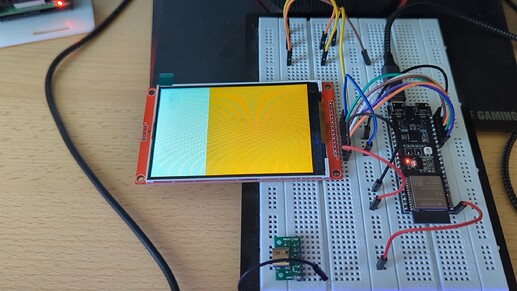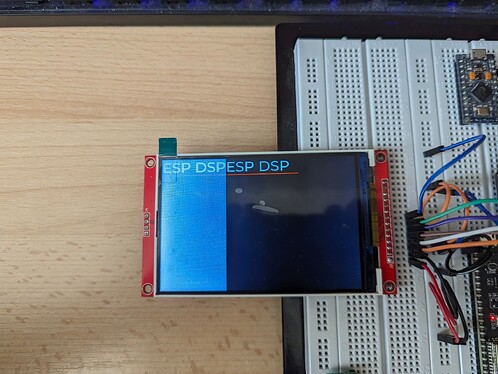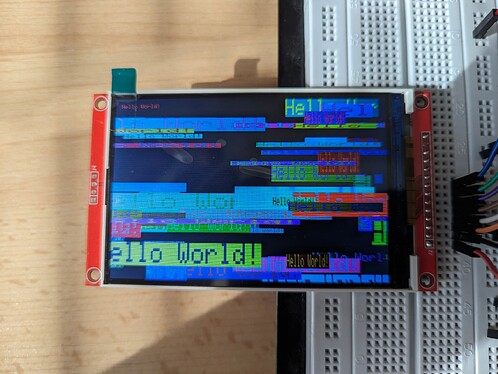Description
4" TFT display using a ST7796s driver produces a white stripe which offsets actual screen content. I should note that I am a noob when it comes to C. I can do some stuff on my own but nothing complex.
LVGL actually runs, but I’ve hidden most widgets so only the background color is displayed. When aligning widgets to a specific corner of the screen, they actually rotate when I change the screen orientation, which is to be expected. However I can’t explain the white “uninitialized” (?) part. I don’t even know how to search correctly for this issue. Its place on the screen is also dependent on which orientation I choose, but is always visible.
I seem to have a similar issue to this thread, but I have a different setup. What else could I change to make this work? It seems to be anThis text will be hidden issue with the driver, but I can’t tell for sure.
What MCU/Processor/Board and compiler are you using?
ESP32-S3 DevKit-C, IDF 5.1.1
What do you want to achieve?
The x = 0, y = 0 screen origin is not in the correct spot
What have you tried so far?
Messing around in the driver (screen was mirrored in the x axis, but is now fixed)
Selecting ILI9488 as the driver (I’ve read that it was similar to mine, did not work)
Swapping horizontal and vertical resolution
Changing orientation
Screenshot and/or video
Link to the video:



